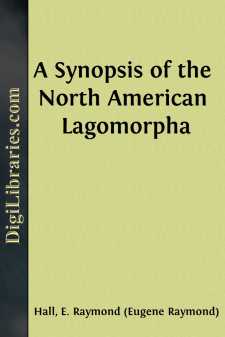Categories
- Antiques & Collectibles 13
- Architecture 36
- Art 48
- Bibles 22
- Biography & Autobiography 813
- Body, Mind & Spirit 142
- Business & Economics 28
- Children's Books 17
- Children's Fiction 14
- Computers 4
- Cooking 94
- Crafts & Hobbies 4
- Drama 346
- Education 46
- Family & Relationships 57
- Fiction 11829
- Games 19
- Gardening 17
- Health & Fitness 34
- History 1377
- House & Home 1
- Humor 147
- Juvenile Fiction 1873
- Juvenile Nonfiction 202
- Language Arts & Disciplines 88
- Law 16
- Literary Collections 686
- Literary Criticism 179
- Mathematics 13
- Medical 41
- Music 40
- Nature 179
- Non-Classifiable 1768
- Performing Arts 7
- Periodicals 1453
- Philosophy 64
- Photography 2
- Poetry 896
- Political Science 203
- Psychology 42
- Reference 154
- Religion 513
- Science 126
- Self-Help 84
- Social Science 81
- Sports & Recreation 34
- Study Aids 3
- Technology & Engineering 59
- Transportation 23
- Travel 463
- True Crime 29
A New Pocket Gopher (Genus Thomomys) From Wyoming and Colorado
Description:
Excerpt
Among small mammals accumulated, from Wyoming, in the Museum of Natural History of the University of Kansas, specimens of the wide-spread species Thomomys talpoides are abundantly represented. Subspecific names are available for most of these, but specimens from the Sierra Madre Mountain Range of Wyoming and Colorado prove upon comparison to pertain to an heretofore unnamed subspecies which may be described and named as follows:
Thomomys talpoides meritus new subspecies
Type.—Male, adult, skull and skin, no. 25628 Mus. Nat. Hist. Univ. Kansas; from 8 mi. N and 19-½ mi. E Savery, 8800 ft., Carbon County, Wyoming; obtained on July 19, 1948, by George M. Newton; original no. 4.
Range.—Sierra Madre Mountain Range of southern Wyoming and northern Colorado.
Diagnosis.—Size small (see measurements); color dark, upperparts in worn pelage of July darker than (near, n) Raw Umber (capitalized terms are of Ridgway, Color Standards and Color Nomenclature, Washington, D. C., 1912) and in fresh pelage of August between (near, 16') Prout's Brown and Mummy Brown; skull small; relative to basilar length, skull narrow across rostrum, zygomata and mastoids; nasals short and posteriorly truncate; premaxillae extending behind nasals; temporal lines faint and divergent posteriorly.
Comparisons.—From Thomomys talpoides rostralis (North Platte River Valley, SW of Saratoga, Wyoming), the subspecies to the east and south, T. t. meritus differs in: Lesser size, darker color, smaller and slenderer skull. The slenderness is especially noticeable in the breadth across the zygomata, mastoids, and rostrum. From Thomomys talpoides clusius (topotypes), the subspecies to the north and west, T. t. meritus differs in: Color much darker; rostrum longer; skull narrower across mastoids and zygomata; tympanic, and also mastoid, bullae smaller. Resemblance to T. t. clusius is shown in the narrowness of the skull interorbitally and in the shortness of the tooth-row.
Remarks.—The specimens of Thomomys from Wyoming on which the name T. t. meritus is based were obtained by Mr. E. Lendell Cockrum and his associates with the thought that intergradation might be shown between T. t. rostralis to the east and T. t. clusius to the west. The animals showed instead, that there was a subspecies differing from each of the two mentioned subspecies in small size, dark color and slenderness of skull. Acknowledgment of assistance with field work is made to the Kansas University Endowment Association.
Measurements.—Average and extreme measurements of seven adult males and five adult females, from the type locality, are as follows: Total length, ââ¢â 204 (193-226), ââ¢â¬ 207 (193-210); length of tail, 56 (46-68), 56 (50-63); length of hind foot, 27.6 (26-30), 27.4 (27-28); basilar length, 30.7 (29.0-33.0), 30.1 (29.5-30.7); zygomatic breadth, 20.4 (18.9-21.6), 19.5 (18.8-20.0); least interorbital breadth, 6.2 (5.8-6.6), 6.1 (5.9-6.3); mastoidal breadth, 17.9 (16.9-18.5), 17.2 (16.7-17.6); length of nasals, 13.7 (12.4-14.7), 13.2 (12.8-13.9); breadth of rostrum, 7.0 (6.5-7.5), 6.9 (6.7-7.3); length of rostrum, 16.3 (15.3-17.5), 15.8 (15.3-16.1); alveolar length of maxillary tooth-row, 7.1 (6.9-7.3), 7.1 (6.8-7.5).
Specimens examined.—Total number 26 and unless otherwise indicated in the Museum of Natural History of the University of Kansas.
Wyoming.—Carbon County: Savery (8 mi. N and 19-½ mi. E, 8800 ft., 12; 7 mi. N and 17 mi....












